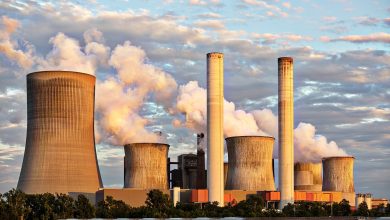All About Natural Gas: The Best Fossil Fuel

Fossil fuels such as coal and petroleum have recently fallen under scrutiny for their adverse effects on the environment. There is another side of non-renewable energy that many opposers are not aware of, however, which comes from natural gas.
Natural gas is a fossil fuel that can be made of a combination of methane, ethane, and hydrocarbons. Similar to other resources in its category, it is considered to be a non-renewable source of energy, which can also be used for electricity, heating, and other related purposes.
How Natural Gas Works
The materials that make up natural gas are found deep underground in the ocean. In some cases, they can be extracted next to or in combination with oil. Natural gas occurs as a result of dead animals and microorganisms being buried under layers of sediment and breaking down slowly over millions of years.
Once the sedimentary rock covers the fossils, they are pushed down toward the seafloor and heated as a result of pressure on both sides. The organic matter is then decomposed into hydrocarbons that gradually transform into natural gas, which will be stored within reservoirs beneath a cap rock until it is extracted.
The extraction of natural gas is completed using drilling wells that reach hundreds of feet into the ground, penetrating the cap rock to release it. These materials are then sent through a system of gathering lines that are routed to a processing plant, where the gas will be processed for distribution.

The process of extracting natural gas has become much more efficient over several decades. There are two technologies, in particular, that allow for a wider expansion of natural gas: horizontal drilling and hydraulic fracturing.
Horizontal drilling is used when a vertical drill cannot reach underground targets containing natural gas. For instance, if a housing complex is built directly on top of a natural gas reservoir, horizontal drilling technology would allow the drill to enter from the side, directing its path to the left or right underground.
Hydraulic fracturing, also known as fracking, is the process of fracturing shale formations that hold natural gases underneath them. A high-pressure liquid is directed into the openings that are created, allowing the machine to extract the gas.
Natural Gas Processing and Use
The procedure involved in processing natural gas is rather intricate. The essential goal is to separate the extracted chemicals from any impurities, making it safe for residential and commercial use. It begins with the removal of any condensates or oils, as well as excess water that was drawn from the source. From there, the natural gas liquids are separated, and sulfur and carbon dioxide are removed before the materials are ready for distribution.
Processing plants most commonly transform these substances into dry natural gas of the highest quality and send them to distribution centers where they are stored safely underground until they are needed. In some cases, the materials are liquified and turned into wet natural gas to be used for electricity and fuel. Wet natural gas is made up mostly of ethane, butane, and methane, while dry gas primarily consists of methane.
Natural gas is not always used in its entirety. Chemical compounds found within the extracted materials such as butane, pentane, propane, and ethane can be separated and distributed on their own for various purposes, including the production of plastic, refrigerants, and more.
Many consumers of natural gas are unaware of how much they use it daily. With fossil fuels as a whole being used for close to 100 percent of energy needs in the world current day, natural gas specifically makes up about 30 percent of that number.
It is used for electricity and heating in homes and buildings, but it also contributes to air conditioning systems and fuel for vehicles. Indirectly, natural gas is utilized within products such as fertilizer, fabric, and antifreeze.
The Benefits Of Natural Gas
Natural gas is preferred over alternate fossil fuels in terms of safety, cost, and preserving the environment. Storing natural gas is relatively easy, and it comes with very minimal risk when compared to coal, oil, and petroleum. Also, the production and use of these gases are much less expensive, with a fully dependable supply to satisfy energy demand.
In terms of climate change, natural gas is friendly to the environment, since it emits fewer greenhouse gases than other options. While it is a non-renewable source of energy that still contributes to global warming, the pollution that it gives off is only about half of the amount released by other fossil fuels.
When natural gas burns, it emits water vapor and carbon dioxide almost entirely. This is exactly what is exhaled into the atmosphere by humans, making it a clean-burning gas. The substantial levels of nitrous oxides, carbon dioxide, and carbon monoxide that are ordinarily released into the environment by other fossil fuels are reduced significantly when natural gas is used as a substitute.
As a resource that is safe, reliable, cost-efficient, and less damaging to the atmosphere than the alternatives, natural gas can satisfy the increasing demand for energy without the consequences.



